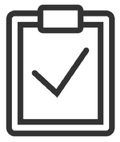Hey everyone, it's Hailey here! I'm thrilled to dive into a topic that's been on many of our minds lately: the ideal frequency for posting on social media. Now, I know what you might be thinking. Isn't there a magic number that guarantees engagement? Well, let's explore this together, because understanding how to effectively share your content can truly transform your brand storytelling.
So, picture this: just before I sat down to record this, I was knee deep in a social calendar project for a new client. I found myself asking Google, "What's the ideal frequency to post on LinkedIn?" And as I typed, the search engine suggested everything from LinkedIn to TikTok. It's a common quest among marketers, right? We all want that one size fits all answer, even though deep down, we know that people are unique. They consume content differently based on their interests and schedules.
But here's the kicker: you can't just wing it. To craft a solid publishing strategy, it's essential to learn from others in the field. Start by looking at research and insights from your peers. For instance, HubSpot recently released its 2024 State of Social Media Report, which compiles survey data on the best times and frequencies for posting across various platforms.
Let's break it down a bit. For Facebook and X, posting multiple times a day seems to be the norm for both B2B and B2C brands. On TikTok, B2B brands are also posting multiple times a day, while B2C brands stick to once a day. Instagram? You guessed it multiple times a day for B2B and several times a week for B2C. And LinkedIn? You'll want to aim for multiple times a week for B2B and at least once a week or several times a month for B2C.
Now, Sprout Social analyzed nearly two billion engagements across hundreds of thousands of social profiles to pinpoint the best times to post. They found that Mondays from eleven a.m. to noon, Tuesdays between ten a.m. and two p.m., and Wednesdays from nine a.m. to three p.m. are prime times for engagement. Interestingly, Sundays are the worst performing days, while Tuesdays, Wednesdays, and Thursdays shine the brightest.
But don't just take my word for it. Sally Howard, a marketing strategist, emphasizes the importance of timing based on your audience. For LinkedIn, she suggests posting early in the morning to catch commuters and decision makers. On Instagram, mornings are great for grabbing attention as people scroll while sipping their coffee. And when it comes to blogs, timing is less critical since people search for content at all hours.
Now, here's a pro tip: don't forget to utilize the recommendations from your content distribution tools. They're based on data your audience provides, so they can be incredibly insightful.
As we navigate this landscape, it's crucial to recognize your audience's preferences. Connie Smart, a writer and content creator, advocates for a direct approach. Ask your audience what channels they prefer, how often they want to receive content, and when they're most available to engage. Surveys, polls, and even informal chats can yield valuable insights.
Mariela Azcuy, a B2B strategist, suggests focusing on a few key channels and determining your posting frequency based on each one. Social media demands more frequent posts to appease algorithms, while blog articles should prioritize quality over quantity.
And let's not forget the importance of testing and analyzing your strategy. William Reinhart, an experienced marketer, emphasizes the need for a structured approach. Experiment with different posting times and content types, analyze the results, and iterate based on what works best.
Consistency is key, folks! Adam Nathan, CEO of Blaze.AI, reminds us that the more you post, the more your audience recognizes your pattern, leading to increased engagement. Michelle Garrett, founder of Garrett Public Relations, swears by sending her newsletter consistently on the second Tuesday of each month.
But here's the thing: don't be afraid to adjust your plan. If something goes viral, like an Instagram Reel, ramp up your posting frequency to capitalize on that momentum. Chris Inman, president of I.D.E.A. Cleveland, found success by shifting his podcast frequency to shorter episodes more often, which boosted listener retention.
Finally, remember that timing isn't just about your audience's behavior. It's also about aligning your content with industry trends. Belinda Conde from Datos highlights the importance of publishing insights when they're most relevant to your audience's current concerns.
So, as we wrap up, remember that there's no one size fits all answer to the best publishing frequency. It's about understanding your audience, experimenting, and being flexible. By implementing these strategies, you'll never have to Google "What's the best time to publish?" again.
If you're hungry
 return
return




























